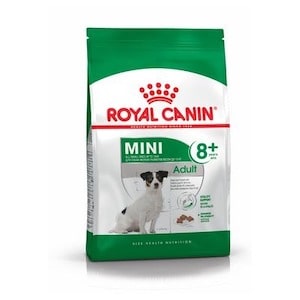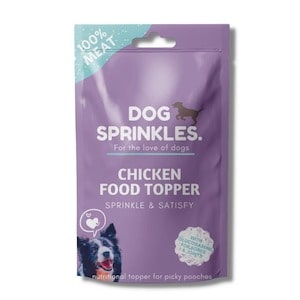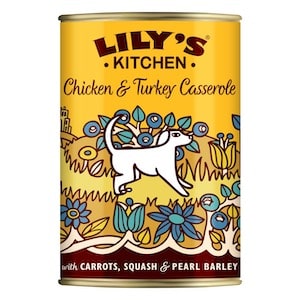Being a dog owner, you may have encountered bad breath in your furry friend and thought of using mint. Also, you may have seen many dog owners who are using mint in their homemade recipes. there are many such reasons which may have made you think of using mint. But, can dogs eat mint?
The answer to this question is a bit tricky but, I will try and provide you with a detailed answer using my years of experience of being a vet.
You Might Also Like:
Can Dogs Eat Mint?
Dogs can eat mint but, in moderation. You can give your dog a couple of fresh mint leaves for dealing with the bad mouth smell or simply as a refreshment. In addition, your furry friend can also eat dried mint but, they are more flavoured in comparison with fresh mint.
The dried mint will cause irritation in dogs in the stomach. In fact, too much mint will cause gastrointestinal issues for your furry friend, especially if you are having a mint plant at your home. Chances are your dog may end up eating some of the leaves. So, never leave your mint leaves unsupervised when the dog is near that area.
While you can offer your furry friend your favourites such as peppermint or spearmint, there are a couple of exceptions, English Pennyroyal & Wintergreen. These mints are toxic for dogs and you must completely avoid giving this to your furry friend.
Further, you must completely avoid giving your dog any sort of human candies, gum or ice cream. These items contain sugar, xylitol, and chocolate. All these substances can cause severe health issues.
You remember that at the beginning of this article, I mentioned that the answer to whether or not dogs can eat mint is a tricky one, well now you have the answer. Let’s use this premise and check out the potential benefits and discuss some hazards of feeding the mint.
Want to learn more about dogs and people food? Check out our article “can dogs have hash browns” to find out if this popular breakfast side is safe for your pup
Benefits of feeding Mint to the dog

If you provide with small amount of mint to your dog, it can have some significant benefits for the dog. The condition is the same – feed them one or two fresh plain mint leaves per day. Here are the benefits of giving mint to dogs:
- Freshens dog’s breath
The mint retains a strong and refreshing smell that helps in dealing with bad breath issues in dogs. Many dog owners use them as an ingredient for getting rid of bad mouth smell. In addition, it also has antiviral, antibacterial, antimicrobial, and antifungal properties which can help in tackling issues such as oral infection or plaque.
- Has antioxidants and is rich in nutrients
Mint retains nutrients that can provide ample health benefits to your furry friend. The antioxidants present in the mint protect the dog from any radical damage that can cause cancer. It also safeguards against cell oxidation.
Further, mints are a good source of Vitamin A and Vitamin C. Vitamin A helps in improving the immune system and C makes the bones stronger. Dog’s vision and skin tone also improve because of these vitamins.
Furthermore, it also retains different minerals such as copper, iron, calcium, magnesium, zinc, potassium, and phosphorus. All of these minerals play an important role in balancing nutrition and keeping a dog healthy.
However, the amount of mint that can provide these benefits exceeds the normally recommended limit and it’s not possible for dog owners to leverage them to improve their dog’s health by feeding one or two mint leaves.
- Helps deal with the allergies
The presence of rosmarinic acid in the mint helps to relieve seasonal allergies in dogs. It reduces inflammation and histamine production and deals with allergies. Additionally, the presence of menthol breaks up mucus and phlegm in the respiratory tract of the dog and hence, acts as a natural congestion reliever.
- Improves digestion
Yes, mints can improve dogs’ digestion. I know that earlier I mentioned that they can cause stomach issues for your furry friend but, if you use them wisely they can help soothe an upset stomach and relieve your dog from nausea or even diarrhoea.
The dietary fibre in the mint helps with bowel movement and also reduces gas symptoms of inflammatory disease in dogs. As a result, the digestive system of the dog remains healthy.
Additional benefits
Mints are often used for reducing the side effects of chemotherapy and radiation treatments. They stimulate the dogs’ appetite and control vomiting. Sometimes the strong aroma of the mints can repel fleas and other pests and protects the dog.
Side effects of giving mint to dogs
The benefits of using mint are visible but, there are many side effects and potential health hazards of giving mint to dogs.
- Excessive consumption can cause health issues
If you provide mint leaves in large amounts, your dog will suffer from gastrointestinal issues and it may also cause pain in the abdomen region. While the presence of fibre in the leaves can work well for improving digestion, it can also cause diarrhoea or vomiting if taken in more quantity.
In addition, menthol in the mints can upset the stomach and also trigger cramps or cause nausea. So, to avoid any such situation, you must avoid giving them more mint and also make sure that they cannot eat the herbal plants that you may have in the house.
- Mint-based products are hazardous
Generally, mint-based products such as candies, mouth fresheners or toothpaste are only for humans. But, many dog owners use these mint-based products on their furry friends. Once in a while, the use of these products may not have a serious impact but, if used frequently, they are hazardous.
These products have added sugar, and chemical ingredients which can cause high blood sugar and also lead to obesity. Also, the majority of these products contain xylitol (artificial sweetener) which is toxic for dogs. It can cause low blood sugar, liver damage and even death.
- Identical plants or specific species are toxic
Some plants have a similar fragrance to the one with mint leaves. But, it’s possible they are toxic for your dogs. I already mentioned such species in the earlier parts of this article. these are English pennyroyal and wintergreen.
The pennyroyal also known as mentha pulegium is a type of mint which is used in flea powders and sprays. It is also planted in the garden for repelling the insects. It has a chemical, pulegone. This chemical damages the liver and can cause severe issues like coma, or even lead to the death of the dog.
Wintergreen (gaultheria procumbens) has an identical fragrance to that of a fresh mint but, it’s not related to the mint. It retains a compound named methyl salicylate. This compound is similar to aspirin and has the capacity to cause kidney damage, bleeding disorders or kill the dog. So, if you are unsure about the species then you must not feed these plants or for that matter any other random plant which may smell like mint.
Offering Mints To Dogs Safely

Giving mints is not that bad but, you have to make sure that your dog doesn’t overeat them. Here are some of the aspects you can consider while offering the mints to your furry friend:
#1 Pick a suitable mint
As I mentioned in the previous section, not every mint is safe for dogs. You need to carefully choose the mint leaves and make sure they are not pennyroyal or wintergreen. Choose spearmint, wild mint or peppermint for refreshing the mouth of your dog.
However, peppermints do contain sugar content that too in high proportion so, it’s better if you use it less.
#2 Give in small amounts
Mints are helpful in refreshing the dog and also getting rid of their bad mouth smell but, offering them more than two mints will cause vomiting and also upset their stomach. You should only give your dog one or two, three at max in a day.
#3 Use fresh and organic mint
If you are offering mint to your furry friend, make sure you only use organic and fresh mint. Even if you are growing plants at your home, use organic materials for maintaining the plants and don’t use any pesticides or chemicals in your plant.
In addition, if you’re buying it from the market inquire whether it’s organic or not. Wash the mints before offering them to your dog to get rid of the dirt and bugs.
Here is a recipe you can consider for serving the mint at home:
- Take some chopped mint leaves and mix them with some peanut butter, pumpkin and wheat flour
- Mix the ingredients and make the dough
- Cut down the dough into small pieces and bake them for roughly 15-20 minutes
- Allow the pieces to cool down
- Serve the food treat to your furry friend
You can try using different combinations and serve your dog the mint leaves. However, you must completely avoid adding preservatives or additives. Also, before starting with any recipe, discuss it with your vet and see whether it’s suitable for your furry friend. Because many dogs may show allergic reactions or are sensitive towards the mints.
#4 Give in moderation
As I keep emphasising – give the mint treats in small amounts. Even if the treat is homemade, you need to offer a limited quantity to avoid any potential health issues. You can store the food treat that you make at home and serve them as refreshment every now and then.
Things to avoid
As a responsible dog owner, it’s necessary to avoid certain things when you think of serving mint to your dogs:
- Avoid human mint products – any mint product that is meant for humans is not good for your furry friend. So, it’s a blunt no for candies and other such items.
- Do not use inorganic mint leaves – the inorganic mint leaves are likely sprayed with different pesticides and other substances or grown in contaminated soil. These substances are harmful to the dog and they will get stomach issues or irritated skin because of them.
- Avoid mixing herbs – mixing different herbs (even if they are organic) is not good. The change in the composition can have an adverse effect on your furry friend’s health.
- No preservatives or artificial sweeteners – the preservatives or artificial sweeteners will only cause stomach upset and lead to different health issues such as diabetes.
Even if you are not exceeding the limit for the mints dogs, they may still have health problems. Not every dog will handle the mints well and at times they will suffer from mint plant poisoning.
Avoid giving your dog any foods that contain potatoes, like french fries or mashed potatoes, as potatoes are not good for dogs. The high starch content can cause gastrointestinal issues. Refer to “are potatoes good for dogs” for more details
Mint plant poisoning
When your dog ingests excessive mint leaves or comes in contact with them, the substances present in those plants can cause gastrointestinal issues and also damage certain organs.
The symptoms of mint plant poisoning will vary on the type of the mint plant, and the quantity of mint ingested. Here are some of the symptoms that you may notice if your furry friend is suffering from plant poisoning:
- Diarrhoea
- Vomiting
- Lethargy
- Nausea
- Abdominal pain
- Seizures
- Liver or kidney failure
- Bleeding disorder
The treatment for mint poisoning will rely on the severity and type of exposure or the ingestion. Here are some of the methods and treatments that help in relieving dog of mint plant poisoning:
If the dog has ingested the mint:
- Try inducing vomiting or gastric lavage to get rid of the toxins.
- Provide the dog with enough water intravenous fluids and electrolytes to avoid dehydration and seizures. If there are seizures or inflammation the vet might use anticonvulsants or anti-inflammatory drugs to manage the symptoms.
- On severe symptoms, a vet will monitor the kidney and liver functioning of the dog and also provide some supportive therapy.
If the dog has irritated skin:
- The skin and fur of the dog must be washed thoroughly with the help of soap and detergent.
- To reduce the irritation on the skin, apply some ointment on the irritated skin.
The recovery of the dog will totally rely on the diagnosis and the course of treatment decided by the vet. Some dog breeds may recover fast while others may not. Because there is no certain detail about the breed that is more sensitive to the mint leaves. The majority of the time the symptoms are easily managed and there is no need for extensive care.
However, if the prognosis is not good, for instance, the dog is having a kidney or liver failure, the situation will require continuous monitoring and possibly surgery. So, looking at these risks it’s obvious for you to look for alternatives for mint leaves if you are only looking to get rid of the dog mouth smell.
Here are some of the alternative methods that you can use for tackling the dog mouth smell:
- Brush their teeth – there is special toothpaste for dogs available in the market. You can use them to clean your furry friend’s teeth regularly and also get rid of the bad smell. Brushing their teeth will help in removing plaque and tartar which helps in getting rid of bad smells and also in preventing dental problems.
- Natural remedy – use apple cider vinegar or parsley and add them to your dog’s water bowl. These natural elements will control the pH level and help in controlling the bad smell.
- Chew toys – provide your dog with some chew toys. They are good alternatives to clean the mouth and gums without using any substance or brush. In fact, the chewing toys will help in stimulating saliva production and also control the bacteria growth in the mouth.
- Diet and nutrition – poor digestion often results in a bad mouth smell. Feeding your furry friend a healthy diet that is low in carbohydrates and rich in protein will help in tackling the issue of digestion and also prevent yeast overgrowth.
These were some of the natural ways you can try for reducing the bad breath smell coming from the dog’s mouth. At times, the bad mouth smell is also an indication that your dog is suffering from ear problems. Look for any signs of infection and consult a vet to resolve the issue.
FAQs
Can dogs eat polo?
Polos or candies have xylitol in them. This artificial sweetener is not good for dogs and often leads to severe health issues. Dogs who ingest candy or polo are likely to suffer from diarrhoea, lethargy, vomiting, weakness, seizures and at times liver or kidney failure.
Can dogs eat mint sauce?
No, dogs should not eat mint sauce. One of the main reasons is the presence of the vinegar. Dogs don’t like the taste of the vinegar and it can also cause irritation in the stomach. In addition, the mint sauce also contains salt (which can cause dehydration), sugar (which can cause tooth decay or diabetes), onion or garlic (which can damage blood cells and cause anaemia), and other additives which can cause allergies and health issues for the dog.
What mint or mint leaves are suitable for dogs?
Spearmint, peppermint, wild mint leaves, and apple mint leaves are suitable for dogs. These mint leaves come with a fresh flavour and help in tackling the bad mouth smell. Further, there are some health benefits as well. They retain high antioxidants and nutrients and can help with digestion and inflammation issues.
Is mint poisonous to dogs?
The majority of the dogs will have no health issues if they have ingested a small amount of the mint leaves, however, if they have eaten more, they are likely to suffer from different health issues and possibly mint plant poisoning. Some dog owners are unaware of the species that are not mints but, their fragrance makes them smell like one. They end up serving them and the dog gets sick.
Can dogs eat mint ice cream?
No, dogs shouldn’t eat ice cream. Because the chocolate and sugar content in them is toxic for dogs. In addition, the ice cream also retains peppermint oil as one of the ingredients which can cause mint poisoning. Also, dogs are lactose intolerant so, offering them a dairy product in general, is not recommended.
Can Dogs Eat Mint – Concluding Remarks
In conclusion, mints are good but only in small doses. They will refresh your dog and also get rid of the bad smell but, for a short time. It is not a permanent solution. So, if you are planning to serve them mints just to get rid of the smell, then you should consider not offering them.
It’s ok as a treat topping but, a higher amount of mint leaves will definitely cause health issues. So, if your intent is to get rid of the bad smell try using other methods or use less mint leaves. This will prevent any probable health issues.
It’s best to avoid giving dogs very many fruits and vegetables, especially starchy ones like potatoes and turnips. Check out “is turnip good for dogs” to learn why turnips are not a good snack for pups.”






